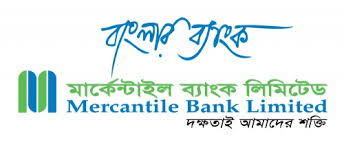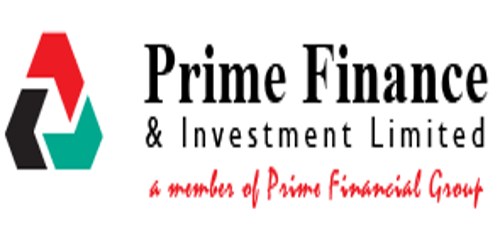Lending Guidelines:
The basic principles of lending are described in this section. It must be clearly understood at the outset that these principles are not inflexible and are given as guidelines for protecting the Loans and Advances.
The following are the general principle to be considered for lending funds to customers on a basic consistent with the global operational objectives and business strategies of the bank:
a) The bank shall provide suitable credit services and products for the markets in which it operates.
b) Loans and advances shall normally be financed from customers deposit and not out of temporary funds or borrowing from other Banks.
c) Credit facility will be allowed in a manner which will in no way compromise with Banks standards of excellence.
d) All Credit extension must comply with the requirements of Bank’s Memorandum and Articles of Association, Banking Companies Act 1991 as amended from time to time / Bangladesh Bank’s instructions and other applicable rules and regulations.
e) A prudent banker should always adhere to the following principles of lending funds to his customer: e.g. (1) Background, character and capability of the borrowers, (2) Purpose of the facility, (3) Term of facility, (4) Safety, (5) Security, (6) Profitability, (7) Source of repayment, (8) Diversity.
It should be remembered that selection of the appropriate borrowers, proper follow-up and end-use supervision through constant follow-up and monitoring are the cornerstone for timely recovery. These guidelines will be updated annually.
Before selecting a customer / client and subsequent recommendation for financing, the Credit Officer / Relationship Manager must observe the following basics of lending:
Industry and Business Segment Focus:
As a general practice Mercantile Bank Limited will definitely concentrate its business in Trade Finance / Export – Import business and all types of Commercial Loan, Industrial / Project Finance / Syndication and structured Finance / SME Financing and other specialized programs except otherwise restricted by the Government or indicated as unethical and banned item. The Bank will give emphasis to diversify its business portfolio commensurate with economic and business trend, life cycle of the products, demand supply gap, social and national obligation etc. The Bank’s policies for financing in different major sectors are summarized as follows:
| SL | Sectors | Policies |
| 1) | Textile / Spinning/ Sweater/ Knitting/ Denims & Garments | To expand |
| 2) | Cement | To maintain |
| 3) | Construction / Real estate / House building | To expand |
| 4) | Telecommunication | To expand |
| 5) | Communication | Selective basis |
| 6) | Information Technology (IT) Project | To expand |
| 7) | Aro-based Industry | To expand |
| 8) | Hospital / Clinic / School / College / University | Selective basis |
| 9) | Healthcare / Pharmaceuticals / Medicine | Selective basis |
| 10) | Electrical / Electronic appliance | To expand |
| 11) | Finance to NBFI | Selective basis |
| 12) | Special Program : Consumer Credit Scheme, SME Financing Scheme, Doctor’s Credit Scheme, Woman Entrepreneurs Development Project, Personal Loan Scheme, Small Loan Scheme, Lease Finance Scheme, Earnest Money Financing Scheme, Car Loan, HBL (General ) / Mortgage Loan, Employees House Building Scheme, ATM, VISA Credit Card, EEF, etc. | To expand |
| 13) | Plastic / Packaging | Selective basis |
| 14) | Leather | Selective basis |
| 15) | Steel and Engineering | To expand |
| 16) | Edible oil | To expand |
| 17) | Scrap Vessel | Restricted way |
| 18) | Paper / Pulp / Partex | To expand |
| 19) | Chemicals | Restricted way |
| 20) | Others | Based on merit |
The Bank’s policy is to handle the specialized business sectors / segments by setting up separate units in Head Office Credit Division. In view of this, Bank has already set up the following units in Head office Credit Division-
Syndication and Structured Finance
Project Finance
Garments Sector
SME
Specialized Schemes such as Consumer Credit Scheme, Doctor’s Credit Scheme, Woman Entrepreneurs Development Project, Personal Loan Scheme, Small Loan Scheme, Lease Finance Scheme, Earnest Money Financing Scheme, Employees House Building Scheme, Car Loan, HBL (General) / Mortgage Loan, ATM, VISA Credit Card, EEF, etc.
The Policies for the above specialized segments / sectors have been / to be circulated to all concerns from time to time.
TYPES OF CREDIT FACILITIES
The Bank’s Policy is to introduce diversified / new types of Products / Product derivatives along with usual Banking Products. At present the Bank offers the following facilities:
1.Trade Finance
a) Non-Funded: L/C, Acceptance, Bank Guarantee, etc.
b) Funded: LTR, PAD, IBP, FDBP, IDBP, Time Loan, Loan (General), etc.
2. Project Finance: (Large and Medium Industries / Small Industries including Agro-based)
a) Non Funded: L/C for import of Machinery, Acceptance, Bank Guarantee, etc.
b) Funded: Time loan, Term loan for retirement of documents of imported machinery / Local machinery / other project fixed costs, Hire Purchase, Lease Finance, Loan (General), HBL (Commercial).
3.i Working Capital (For Industrial Finance)
a) Non Funded: L/C for import of Raw Materials, Acceptance, Bank Guarantee, etc.
b) Funded: Overdraft Cash Credit (Hypo), Cash Credit (Pledge), PAD, LTR, Time Loan, IBP, etc.
3.ii Working Capital (For Work Order):
a) Non Funded: Letter of Credit, Bank Guarantee, etc.
b) Funded: SOD (work order), SOD (General), etc.
4. Commercial Lending
a) Non Funded: L/C for import of goods, Acceptance, Bank Guarantee, etc.
b) Funded: Cash Credit (Hypo), Cash Credit (Pledge), OD, PAD, LTR, Time Loan, IBP etc.
5.Finance to NBFI
a) Non Funded: L/C for import of machinery’s / equipment for their clients, Bank Guarantee, etc.
b) Funded: OD, Time Loan, Term Loan (Credit line), Call Loan, Zero Coupon Bond Purchase.
6.Specialized Scheme
Consumer Credit Scheme, SME Financing Scheme, Doctor’s Credit Scheme, Woman Entrepreneurs Development Project, Personal Loan Scheme, Small Loan Scheme, Lease Finance Scheme, Earnest Money Financing Scheme, Employees House Building Scheme, Car Loan, HBL (General ) / Mortgage Loan, ATM, VISA Credit Card, EEF, etc.
7. Export Oriented Business
a) Non Funded: Back to Back L/C, Acceptance, Bank Guarantee, Letter of Credit, etc.
b) Funded: Packing Credit, Overdraft, Hire purchase, Lease Finance, FDBP, IDBP etc.
8. Advance against Financial Obligation
a) Funded: SOD (FO), SOD(SS), SOD(FDR), SOD(General)
9. Products under Islamic Banking System
The Bank has a plan to establish an Islamic Banking wing at Head Office aiming to open Islami Banking Branches subject to permission from Bangladesh. Islamic Banking branches shall meticulously follow the operational modes and methodologies as permissible under Islamic Shariah. The major lending products of the Bank under Islamic Banking System will be as follows:
SINGLE BORROWER / GROUP LIMITS / SYNDICATION
The Bank may extend the maximum credit facilities (funded / non-funded) to a single client / enterprise / group as per guidelines of Bangladesh Bank BRPD circulars issued / to be issued from time to time on the following criteria:
a) Clients who falls under Grade 1 category as per Bank’s Risk Grading System.
b) Covered by adequate collateral security or Guarantee.
c) Established long term business / Banking relationship.
d) The total outstanding financing facilities by the Bank to any single client or enterprise or organization / group shall not at any point of time exceed 35% of the Bank’s total capital subject to the condition that the maximum outstanding against fund based financing facilities (funded facilities) do not exceed 15% of the total capital. Non-Funded Credit facilities e.g. letter of credit, guarantee, etc. can be provided to a single large borrower but under no circumstances, the total amount of the funded and non-funded facilities shall exceed 35% of the Bank’s Capital.
e) In case of export sector, single borrower exposure limit would be 50% of the Bank’s total capital. But funded facilities in case of export credit shall not exceed 15% of the total capital.
f) Loan sanctioned to any individual or enterprise or group amounting to 10% or more of the Bank’s capital shall be considered as large loan.
g) Total large loan portfolio of the Bank will not exceed the limit fixed by Bangladesh bank vide their BRPD circular # 05 dated April 09, 2005 or as advised by Bangladesh Bank from time to time.In line with basic principles of lending, the Bank always discourages to lend its maximum ceiling to a single client / group to minimize the risk. The Bank will prefer as a policy guideline to arrange syndicated loan / participate in the syndicated finance / consortium loan arrangement or in a club finance.
One Obligor / Group Concept
Group Relationship would be established as per Bangladesh Bank guidelines provided / to be provided from time to time.
LENDING CAPS
a) The Bank Management will establish a specific industry sector exposure cap to avoid over concentration in any one-industry sector. Sector-wise allocation of Credit shall be made annually with the approval of the Executive Committee of the Board of Directors / Board of Directors as per appendix-1.1.
b) Diversification of Credit Portfolio will be encouraged so as to reduce the risk of dependence on a particular sector for balanced socio-economic development of the country.
c) Branches shall submit a report outlining trend and outstanding to the Head of Credit Administration Division on quarterly basis for onward submission to the Executive Committee of the Board of Directors / Board of Directors for information/ perusal/ guidance.
DISCOURAGED BUSINESS TYPES
The Bank will discourage lending to following areas of business:
- Military Equipment/Weapons Finance
- Tobacco sector
- Companies listed on CIB black list or known defaulters
- Highly Leveraged Transactions.
- Finance of Speculative Investments
- Logging, Mineral Extraction/Mining or other activity that is Ethically or Environmentally Sensitive
- Counterparties in countries subject to UN sanctions.
- Share Lending (Not more than 60% of share value of last 6 (six) months market average or maximum 35 lac whichever is lower or as per guidelines of Bangladesh Bank)
- Taking an Equity Stake in Borrowers (except under Islamic Banking Operation)
- Bridge Loans relying on equity/debt issuance as a source of repayment.
- Lending to Holding Companies.
STEPS IN CREDIT APPRAISAL SYSTEM
Every financial institution has to proposed projects before sanction the credit. The credit worthiness and performance of the clients are also evaluated before approval. It is done through a credit appraisal system. It is an important part for the institution that is lending fund to different projects or clients. The performance of the bank in terms of recovery rate as well as of earning percentage would be highly influenced by the presence and effective utilization of a sound and appropriate credit appraisal system. Credit appraisal system of the MBL has been discussed here.
MBL follows the following procedure for a standards credit appraisal-
LOAN APPLICATION FORM
The starting point o project appraisal is the well-documented loan applications from the sponsors (client) in the bank’s standard questionnaire form and duly signed by the prospective borrower. For any type of credit facilities relating to the working capital, trade finance, project finance and contract work, clients/ borrowers must filed an application form with the following information.
Loan application form of MBL asks the following information about the client-
Name of the firm/company/individual.
Business address.
Permanent address.
Constitution/status (sole proprietorship/partnership/public ltd. Co./private ltd. Co..
Date of establishment and place of incorporation.
Background and business experience.
Particulars of assets- a. Land / Building b. Bank Deposit c. Stock / Shares
Nature of business.
Statement of liabilities with MBL and other banks.
Financial statement for the last years explaining the following terms-
- Capital funds / Net worth.
- Balance sheet statistics.
For working capital finance clients/ borrowers must provide the following information-
- Annual Production
- Annual sales.
- Sources of raw materials
- Cash flow statements
CREDIT PROPOSAL
Credit officers prepare credit proposal after sufficient information from the client. After analyzing all of above factors the branch credit officers move the proposal to the head office credit committee or further analysis if the primary findings result came positive.
CREDIT RISK EVALUATION
A comprehensive and accurate appraisal of the risk in every credit proposal of the Bank is mandatory. No proposal can be put on place before approving authority unless there has been a complete analysis. In order to safeguard Bank’s interest over the entire period of the advance, a comprehensive view of the capital, capacity, integrity of the borrower, adequacy, nature of security, compliance with all regulatory /legal formalities, condition of all documentation and finally a continues and constant supervision on the account are called for. It is absolute responsibility of the Credit Officer / RM to ensure that all the necessary documents are collected before the proposal is placed for approval. Where Loans/Advances/Credit facilities are granted against the guarantee of the third party, that guarantor must be subject to the same credit assessment as made for the principal borrower.
While making lending decisions, particular attention shall be given to the analysis of credit proposals received from heavily leveraged companies and those dealing in non-essential consumer goods, taking special care about their debt servicing abilities.
Emphasis shall be given on the following several credit principles:
a) Present and future business potentiality for optimum deployment of Bank’s fund to increase return on assets
b) Preference for self liquidating QUALITY business
c) Avoiding marginal performers.
d) Risk depression is basic to sound credit principles and policies. Bank shall be careful about large and undue concentration of credit to industry, one obligor and common product line etc.
e) Managing the amount, size, nature and soundness of one-obligor exposures relative to the size of the borrower and Bank’s position among his other lenders.
f) Personal guarantee of the principal partners or the Directors of the Company shall be obtained
BASICS OF CREDIT RISK
The following risk areas shall be considered for analyzing a credit proposal.
Borrower Analysis (Management/Ownership/Corporate Structure Risk
The majority shareholders, management teams and group or affiliate companies shall be assessed. Any issues regarding lack of management depth, complicated ownership structures or inter-group transactions shall be addressed, and risks to be mitigated. The following questions may be asked to assess the Management Risk:
- Who is the borrower? Does any particular/special characteristic of borrower need particular attention? For example, if the borrower is a Trust, this calls for examination of Trust Deed.
- Are there adequate abilities and experience in senior management?
- Is there adequate depth and succession planning?
- Is there any conflict amongst owners/senior managers that could have serious implications?
- Is the Manager/Credit Officer satisfied about the character, ability, integrity and experience of the borrower?
Industry Analysis (Business and Industry Risk)
The key risk factors of the borrower’s industry shall be assessed. Any issues regarding the borrower’s position in the industry, overall industry concerns or competitive forces (demand supply gap) shall be addressed and the strengths and weaknesses of the borrower relative to its competition to be identified. For the above purpose the Credit Officers/RM may obtain / collect data from the statistical year book / economic trends of Bangladesh Bank / public report / newspaper/ journals etc. The following questions may be asked to assess the Business and Industry Risk:
- Are there any significant concentrations of sales (by customer, industry, country, region)?
- How does the borrower rate with its competitors in terms of market share?
- Can increased direct production costs be easily passed on to customers?
- Does the borrower deal in any specific product that may be subject to obsolescence?
- Is the purpose of borrowing consistent with the objectives of the Company?
- Is the purpose legal? Does it contravene any rules and laws of the country and any instruction issued by the Bangladesh Bank/Head Office?
Supplier/Buyer Analysis/Market Risk
Any customer or supplier concentration shall be addressed, as these could have a significant impact on the future viability of the borrower.
Market Risk
The sufficient market data is to be obtained to identify clients/borrowers’ market share in the industry/demand-supply gap in the market.
Technological Risk
The product that is manufactured must be technologically viable i.e. whether the technology applied is updated. The product’s stage in its life cycle must be understood. Technical Aspects of the products must be addressed. The Credit Officer / RM must be satisfied with the mitigating factors of technical and technological risk, associated with the products.
Financial Analysis (Historical / Projected)
An analysis of a minimum of 3 years historical financial statements of the borrower should be presented. Where reliance is placed on a corporate guarantor, guarantor’s Financial statement should also be analyzed. The analysis should address the duality and sustainability of earnings, cash flow and the strength of the borrower’s balance sheet. Specifically, cash flow, leverage and profitability must be analyzed. In this regard the Credit Officer / RM must look into the status of chartered accountant audit firm.
Where term facilities (tenor > 1 year) are being proposed, a projection of the borrower’s future financial performance should be provided, indicating an analysis of the sufficiency of cash flow to service debt repayments. Loans shall not be granted if projected cash flow is insufficient to repay debts. In this regard the possibilities of cost overrun and sensibility analysis shall be done. The following questions may be asked to assess the Financial Risk:
- Does the borrower produce financial statements on time?
- Is working Capital Adequate?
- Has the customer actual title to stock?
- Have financial covenants been met?
- Has there been any major sale of shares by directors?
- Any significant change in asset conversion cycle? (Account Receivables/ payables Inventory e
ü Historical Analysis / Account Conduct
For existing borrowers, the historic performance in meeting repayment obligations (trade payments, cheaque, interest and principal payments, etc.) shall be assessed. In this regard the Credit Officer / RM may look into the account turnover like debt summation / credit summation / highest debit balance/ highest credit balance (or lowest debit balance), no. of debit entries/ no. of credit entries for last three years (year wise).
Interest Rate Risk
The interest rate must be fixed based on different risk factors associated with the type of business such as liquidity risk, commodity risk, equity risk, and loan period risk. Interest rate also arises from the movements of interest rate in the market. In assessing the pricing and profitability, the Credit Officer/RM must consider the income from ancillary business like foreign exchange business, group business, volume of business etc. Related questions to be addressed are:
- What is the rate of interest charged?
- Is the rate fixed in consideration to the risk factors?
- Will the rate charged be profitable to the Bank?
Foreign Exchange Risk
The foreign exchange transaction is associated with foreign currency fluctuation risk. Therefore the Credit Officer/RM must take care of for the Forex risk. The questions to be addressed are-
- Does the business involve foreign currency dealings?
- What are trends of foreign currency fluctuation?
Cost overrun Risk
This type of risk is generally involved in taking project finance decision. A high degree of cost overrun may cause the failure of the project. Therefore the credit officer must consider the cost components of the project and their chance of devaluation. The questions to be addressed are-
- Whether the construction cost may increase?
- Whether the imported machinery cost may increase for the fluctuation of the foreign currency.
- Are all types of cost components addressed during preparation of feasibility report?
- Does sensitivity analysis prove sufficient shock absorbing capability of the project?
Mitigating Factors
The Credit Officer/RM must address to different risks associated with the proposal. The possible risk include but not limited to market risk, financial risk, foreign exchange risk, risk of cost overrun, margin sustainability and/or volatility, high debt load (leverage/gearing), overstocking or debtor issues, rapid growth, acquisition or expansion, new business line/product expansion: management changes or succession issues, customer or supplier concentrations, and lack of transparency or industry issues. Mitigating factors for risks identified in the credit assessment shall have to be described and understood.
The Bank must assess the critical risks of facilities given / to be given and ways / factors of mitigation of those risks. Some of the critical factors are:
- Volatility
- High debt
- Overstocking
- Rapid growth
- Acquisition
- Debtors issues
- Succession
Loan Structure
The amounts and tenors of financing proposed should be justified based on the projected repayment ability and loan purpose. Excessive tenor or amount relative to business needs increase the risk of fund diversion and may adversely impact the borrower’s repayment ability. Related questions to be addressed are:
Are facilities justified by the borrower’s business?
Are any capital / long term expenditure being financed by short time borrowing (either OD or TR)?
What is the amount required? Is it sufficient or excess for the purpose mentioned?
Security
A current valuation of collateral must be made by Bank’s approved enlisted surveyors and the quality and priority of security being proposed shall be assessed properly.
Loan shall not be granted solely on security consideration. Adequacy and the extent of the insurance coverage shall be assessed. The Credit Officer/RM must look into the client’s interest / dependability on the collateral offered as security.
- Is security offered acceptable and adequate?
- Has all the security been perfected in accordance with the loan application?
- Have any valuation and inspection been undertaken since the last application?
- If you hold a guarantee, do you consider it has value?
- Has the credit rating of the Borrower deteriorated and have you considered the requirement for additional security?
- Can a valid charge be obtained on the security?
Name lending (Relationship Assessment) :
Credit proposals shall not be unduly influenced by an over reliance on the sponsoring principal’s reputation, reported independent means, or their perceived willingness to inject funds into various business enterprises in case of need. These situations shall be discouraged and treated with great caution. Rather, credit proposals and the granting of loans will be based on sound fundamentals supported by a thorough financial and risk analysis. Related questions to be addressed are:
- Has the borrower complied with the terms and conditions of the facility?
- Adverse feature include: any past dues / excesses / delays / cheque returns and or default in covenants and / or failure to meet interest when due.
- Does the account fluctuate with the seasonality of the business?
- Has the relationship strategy and earnings for the last twelve months been met?
ISSUE OF SANCTION LETTER
After analyzing the credit proposal and related documents if the result came then sanction letter sent by head office to the branch, indicates that properly authorized credit committee of the bank has approved the proposal. A copy of the sanction letter has been given to the customer for receiving his/her acceptance about all terms and condition approved by the bank.
FINAL SCRUTINY
All necessary documentation required meeting the terms and conditions of the facility in the manner in which it was approved are re-checked before final approval of the credit. It is to be ensured that all legal formalities have been complicated before disbursement of loan.
DISBURMEN
After approval the first installment transferred from head office general account to the applicant bank account which is held in the MBL. Then applicant can give the loan amount by cheque to his/her creditors.
MONITORING
Periodical review of all accounts should be made. The review may be made as frequent as necessary. Proper record should be kept in the loan file regarding their collection status. In cases of default this should be reported to the branch manager and to the head office as per exaction statement.
LEGAL ACTION
Legal process starts only when a loan is classified and considered non recoverable under normal interaction with the borrower. Decision for a legal action is made on case-to-case basis.
FUNTION OF AUTHORITY LEVEL IN THE CREDIT PROCESSING
In approval process the Bank segregates its Relationship Management / Marketing from the Approving Authority. The existing approval authorities are Head of Branch, Zonal Head, Head Office Credit Committee, Executive Committee of the Board of Directors and Board of Directors as per their delegation of business powers defined in later section. The recommending or approving executives shall take responsibility for and be held accountable for their recommendations or approval. Delegation of approval limits shall be as per policy guidelines that all proposals where facilities are up to 15% of the bank’s capital shall be approved at the CRM level, facilities up to 25% of the capital shall be approved by Managing Director & CEO subject to the limit approved by the Board of Directors. At present the Bank has business delegation powers approved by the Board of Directors in its 42nd meeting held on 25th April 2003. Credit proposals in excess of 25% of the Bank’s Capital to be approved by the Executive Committee of the Board of Directors or Board of Directors after recommendation of CRM, Corporate Banking and Managing Director & CEO.
The Branch Marketing Team comprising of Executives and Officers shall market the clients and then prepare credit appraisal memo as per the prescribed format and within the purview of the set rule/policy guideline of the Bank. In case it is within the delegated business power of the Head of Branch, the concerned Executive / Officer will place it to the Head of Branch who will make judgment (qualitative and quantitative judgment) and if found viable then he/she will approve the Loan otherwise he/she may reject it or forward it to the Zonal Head / Head of Corporate / Commercial Banking at Head Office. The concerned Executive / Officer at Zonal Office on receipt of the proposal will prepare a credit appraisal memo as per the prescribed format and within the purview of the set rule / policy guidelines and then place it to Zonal Head who will make Judgment (qualitative and quantitative) and if found viable then he will approve the facility, if it is within his business delegated power otherwise he may reject it or forward it to the Head of Corporate / Commercial Banking at Head Office along with his recommendations. The Proposal on receipt by the Head of Corporate / Commercial Banking will forward it to the Head of Credit who in turn distribute it to the respective Credit Officer at the Head Office for scrutiny, analysis and prepare a Office Note / Memo with due diligence along with their observations / results of analysis and to place it before the Head Office Credit Committee. In Head Office Credit Division, separate Credit Officers are designated for looking after the proposal of separate Branches. There also exist separate units for handling Garments related proposal / Export Finance, Project Loan, Syndication and Structured Finance. The Head Office Credit Committee depending upon the delegated business power shall either approve it (or reject it if not found viable) or place it to the Executive Committee of Directors / Board of Directors.
CLASSIFIED LOANS
A classified Loan or Commitment is one, which is classified as Substandard, Doubtful or Loss as per policy of Loan classification set by Bangladesh Bank.
Position of Classified Loans and Advances and other assets shall be placed before the Board of Directors of the Bank and quarterly submitted to Bangladesh Bank.
The classification status must be reflected in the CIB reports on regular basis (monthly for Tk. 1.00 crore and above and quarterly for all the facilities outstanding of Tk. 50,000.00 to below Tk. 1.00 crore. Besides, statement for Tk. 10,000.00 to below Tk. 25,000.00 and Tk. 25,000.00 to below Tk. 50,000.00 has also to be reported.
RESCHEDULING AND DECLASSIFICATION
Rescheduling and declassification of loans, advances and other assets require prior approval of Head Office of the Bank and in some specific cases from Bangladesh Bank. During rescheduling / declassification of the Loan, the Bangladesh Bank’s sets rules must be followed meticulously.
MONITORING PROCESS OF CLASSIC LOAN
To minimize credit losses, monitoring procedures and systems should be in place, which will provide an early indication of the deteriorating financial health of a borrower. The credit monitoring process in Bank is vested on Monitoring, Recovery and Compliance Division. Head of Monitoring, Recovery and Compliance Division will report the exceptional list of assets on daily basis on the following categories:
Past due (which are not paid or renewed at maturity – Grade 5) principal or interest payments, past due trade bills, account excesses and breach of loan covenants;
Loan terms and conditions are monitored, financial statements are received on a regular basis and any covenant breaches or exception are to be referred to the CRM and the RM team for timely follow-up.
Timely corrective action is to be taken to address findings of any internal, external or regulatory inspection/audit.
All borrower relationships/loan facilities are reviewed and approved through the submission of a Credit Application at least annually.
Monitoring, Recovery and Compliance Division will keep regularly follow up and corrective action to be taken in a timely manner before the account deteriorates further.
EARLY ALERT PROCES
An Early Alert Account is one that has risks or potential weaknesses of a material nature requiring monitoring, supervision or close attention by the management.
If these weaknesses are left uncorrected, they may result in deterioration of the repayment prospects for the asset or in the Bank’s credit position at some future date with a likely prospect of being downgraded to 5 Category or worse (Impaired status), within the next twelve months.
Early identification, prompt reporting and proactive management of Early Alert Accounts are prime credit responsibilities of all Credit Officers / RM and must be undertaken on a continuous basis. An Early Alert report shall be completed by the Credit Officer / RM and to be sent to the approving authority for any account that is showing signs of deterioration within seven days from the identification of weaknesses. The Risk Grade shall be updated as soon as possible and no delay to be made in referring problem accounts to the Monitoring, Recovery and Compliance Division for assistance in recovery.
Despite a prudent credit approval process, loans may still become troubled. Therefore, the Credit Officers must ensure the early identification and prompt reporting of deteriorating credit signs for swift action to protect the Bank’s interest. The symptoms of important early alert are by no means exhaustive and hence, if there are other concerns, such as a breach of loan covenants or adverse market rumors that warrant additional caution, an Early Alert report shall be raised.
Moreover, regular contact with customers is to be maintained to enhance the likelihood of developing strategies mutually acceptable to both the customer and the Bank. Representation from the Bank in such discussions shall include the local legal adviser when appropriate.
















